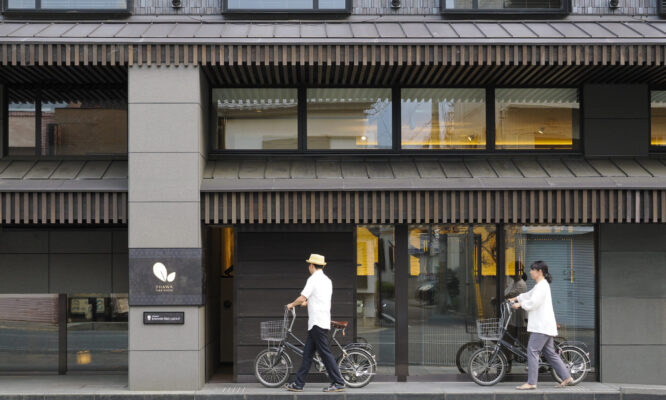Glimpses of simplicity remain mercifully undisturbed as the coastal state reinvents itself
There’s nothing terribly glitzy about clinging to the bow of a Malaysian longboat as it plies its way out of Kuala Terengganu’s harbour. But for travellers hungry for new experiences and adventure, it feels wonderfully romantic to be part of a tradition that has flourished in this city for decades.
Every year at the inaugural International Squid Jigging Festival, about 20 colourful boats glide through the mirror-calm sea, ripping frayed silver ribbons in their wake. As dusk steals the day away, the boats drop anchor about 10 kilometres off the coast, where some 200 local and international participants get their game faces on, all set to snatch squid from the inky aquarium below.
Squid jigging is one of many local traditions embedded in the texture of contemporary life in Terengganu state, where such glimpses of simplicity remain mercifully undisturbed. The prime time for jigging for squid is between April and August, immediately after the monsoon season.
The local squid jigging festival has been held in Kuala Terengganu, the capital of Terengganu, for about two decades now. Local fisherman Zahair Said says last year’s international status reflects how the state, which was once one of Malaysia’s most impoverished, is seeking to go full steam ahead with various activities.
There are reasons why the state has invested in this festival and made it an international event, including to promote a genuine local activity and to boost the economy. It’s also about keeping the tradition of squid jigging and recreational fishing alive for the next generation, says Zahair, who learned to fish alongside his father. He now works for the local fisheries department, teaching high school students how to fish sustainably and become self-sufficient.
Even though everyone on board the vessel has a mobile phone, there’s still plenty of quiet and respite. The sense of calm inspired by rhythmic jig-jig-jigging – which mimics the movement of shrimp – is only shattered when someone catches a squid, and belts out their loudest ‘woo-hoo.’ After five hours, the squid jigging jig is up, and the boats convoy back into the harbour to bring home the haul, which is then weighed and measured by the judges.
Sitting in stark contrast to the high-end jewellery shops and hotels that hulk skyward, Pasar Payang market is a perennial crowd-puller that provides a colourful snapshot of the amalgam of faiths and cultures in the predominantly Muslim state. The market sits over the river, Sungai Terengganu, and rings with the happy shouts of stallholders who huddle behind everything from piles of pungent durian to mounds of macadamia nuts and keropok lekor (fish sausage).
Nearby Chinatown is also worth exploring: it’s full of tailors, temples and teahouses, locals sitting and gossiping, and the soft voices of women urging you to choose a head scarf from a kaleidoscope of colours. With its 244-kilometre coastline overlooking the South China Sea, it’s easy to imagine a time when Terengganu was a port of call for merchant traders.
The city’s close proximity to water is also celebrated at the Floating Mosque, built over the Ibai River. Visit the Floating Mosque at prayer time and you will see robed Muslims floating along the passageways and trickling into the mosque to pray. At high tide, as the chanting rings out from all corners, and the rich glow of a crimson sunset stains the sky, the Floating Mosque is a sight to behold: it really does appear to hover over the lagoon.
It’s not just the heritage waterfront city of Kuala Terengganu that has become popular with visitors. The state of Terengganu, with a population of about 1.1 million, is endowed with countless attractions, many of which are to be found at Kelah Sanctuary and Lake Kenyir, housing 10,000 hectares of national park.
This living quilt of rainforest conceals treasures such as Bewah Cave, where 16,000-year-old skeleton remains were found, as well as the lovely Lasir Waterfall, which spills 150 metres onto the glistening rocks below.
It’s worth booking a guided trek into this rugged wilderness, as it is full of gnarled roots, heavy foliage and creeks that bubble around giant boulders. Dunk in the mineral-rich water, lower your feet into a mosh pit of nibbling kelah fish or just trundle through the jungle admiring trees with leaves painted 50 shades of green. While the lake is famous for its waterfalls, rare orchids and rapids, those keen for underwater action should head out into the South China Sea to Pulau Redang, a protected marine site with submerged cities of coral, making it a wonderful snorkelling spot.
For those desperate for swaying palms, squeaky-clean sand, swishing masts, rock-star villas and unbelievably clear water, it’s worth whizzing through the wave-tossed sea to Laguna Redang Island Resort. When you’ve had your fill of lazing on sun-warmed rocks, there are other diversions worth day-tripping to, from the State Museum and Sungai Ketiar Elephant Sanctuary to the Pengkalan Budaya Cultural Centre, which shows off cottage industries such as weaving and batik printing, and past-times such as giant top spinning.
Yes, the discovery of offshore oil reserves in 1974 has prodded Terengganu to reinvent itself over recent decades. But the state still moves at a pace that allows visitors to experience the beauty of everyday life.









